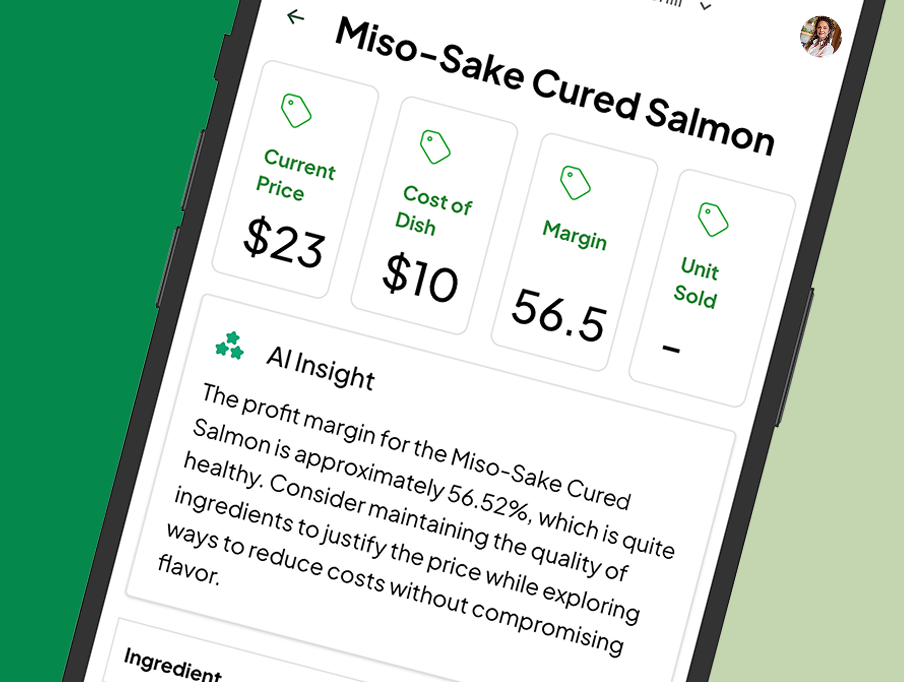Step into almost any restaurant in America, and you’ll notice a familiar rhythm: the clatter of dishes, the hum of conversation, the sizzle from the kitchen—and often, a “Now Hiring” sign hanging in the window.
Turnover has long been part of the restaurant business. But something has shifted. More than ever, restaurant employees are cycling through jobs faster—and many aren’t even making it to the 90-day mark.
Why do so many restaurant workers quit within three months? And what can restaurants do to break the cycle?
At MRGN, we help restaurants manage their financial health—forecasting everything from labor costs to revenue per shift. But behind those numbers is a deeper story: one about expectations, operations, and the human cost of instability. Let’s unpack what’s really happening behind this three-month trend—and what it means for the future of hospitality.
The Three-Month Cliff: When New Hires Walk
It typically starts the same way. A restaurant is short-staffed. A new hire starts, hopeful and eager to learn. The first few shifts go well—or at least well enough. But by the third month, something shifts. Maybe they start calling out. Maybe they quit with little notice. Maybe they stop showing up altogether.
You’re not imagining it. Research shows that restaurant turnover often spikes between the 60- and 90-day mark, especially among front-line workers like servers, line cooks, and hosts.
There’s no single cause—but several consistent themes:
- Mismatch between expectations and reality
- Lack of training or onboarding
- Inconsistent schedules or unstable income
- Poor management or toxic culture
- No clear path for growth or promotion
And at the heart of it all? A disconnect between short-term decisions and long-term planning.
A Brutal Reality Check: Expectations vs. Experience
Restaurant work is known for being tough—but that doesn’t mean new hires are ready for the realities of the job. Many enter with optimism: they’re excited to work with people, learn new skills, and join a team. But when onboarding is rushed (or skipped entirely), the reality can feel overwhelming.
Think of it this way: if someone’s first few shifts are disorganized, chaotic, or understaffed, they may not blame the team—they may assume they’re not cut out for the job. That self-doubt becomes disengagement. Disengagement turns into absenteeism. And before you know it, they’re gone.
What’s worse? That churn doesn’t just hurt morale—it’s expensive.
The Financial Impact of Early Turnover
Replacing an hourly restaurant employee can cost $2,000–$5,000, factoring in recruitment, onboarding, lost productivity, and overtime costs for the rest of the team. But these costs often go unnoticed because they don’t appear as a clear line item. Instead, they show up in:
- Increased errors during service
- Higher customer comp rates
- Slower table turns
- Employee burnout
- Manager time spent rehiring and retraining
At MRGN, we help restaurants model the real cost of turnover, not just in wages, but in lost revenue and operational inefficiencies. Once you quantify it, the need for better retention strategies becomes obvious—and urgent.
Undertraining Leads to Undermining
In an industry built on speed, training often gets sidelined. But skipping structured onboarding is one of the fastest ways to lose a new hire.
Employees who feel unprepared are more likely to:
- Make costly mistakes
- Feel like a burden to the team
- Experience anxiety or stress during shifts
- Blame themselves for poor performance
The result? They leave before they ever had a chance to succeed.
Restaurants that build even a basic onboarding framework—clear checklists, buddy systems, and one-on-one check-ins—see stronger retention. Investing a few hours up front can save hundreds of hours later in the form of lower turnover, fewer errors, and stronger performance.
Burnout Builds Quickly—and Quietly
Let’s talk about burnout. It doesn’t take long to set in—especially in high-pressure restaurant environments. A new hire might be working doubles within their first week. They might get tossed into service with little support. If someone quits midweek, they might suddenly be covering an entire section solo.
While this might feel “normal” to longtime restaurant workers, it’s a fast track to burnout for new hires. And burnout isn’t just about being tired—it’s about feeling undervalued, unsupported, and unseen.
Restaurants that proactively manage workloads, check in with new employees, and foster communication see lower burnout—and higher morale.
Schedule Instability Breeds Financial Instability
Another key reason for high turnover? Inconsistent hours and unpredictable income.
When restaurant workers can’t count on their schedule—or their pay—they can’t plan their lives. A short week might mean they can’t make rent. A last-minute cut from the schedule can lead to resentment. For tipped workers, a bad week of shifts or low-volume nights can spell financial disaster.
At MRGN, we work with restaurants to build smarter labor forecasting models so operators can schedule with confidence. When you know what sales are projected, what your prime cost thresholds are, and where labor fits into the bigger picture, you can offer more stable hours, reduce surprise cuts, and make better decisions about staffing ahead of time.
Predictability isn’t just good for business—it’s good for people.
Culture Still Matters
You can’t fix turnover with scheduling alone. Culture plays a massive role, especially in the first 90 days. Do employees feel welcomed? Do they know who to ask for help? Do they feel safe?
Toxic environments push new hires out faster than anything. That includes:
- Managers who yell or belittle
- Favoritism in shift assignments
- Gossip or exclusion
- No accountability for harassment or discrimination
Restaurants that prioritize psychological safety—where employees can ask questions, make mistakes, and feel like part of a team—build cultures that people want to stay in.
No Vision, No Loyalty
Here’s another key insight: most people don’t quit because they hate the job. They quit because they don’t see a future there.
After a few months, employees start asking questions:
“Is there room to grow?”
“Will I learn something here?”
“Is this place invested in me, or am I just filling a shift?”
Restaurants that communicate growth opportunities—even if it’s just learning the bar or taking on a lead role during brunch—build buy-in. And buy-in builds longevity.
Retention doesn’t require big raises or career ladders. It requires clarity, communication, and care.
What Can Restaurants Do Differently?
Here’s the good news: most of these issues are fixable—and not necessarily expensive to fix.
A few high-impact strategies include:
- Create a 30-60-90 onboarding plan to guide new hires through their first months.
- Forecast labor needs based on real-time sales and seasonal data to avoid overstaffing or understaffing.
- Build consistent schedules so workers can plan their lives—and feel valued.
- Use financial tools (like MRGN) to measure the real cost of turnover and invest accordingly.
- Foster a culture of support through check-ins, shout-outs, and clear expectations.
The best part? These changes don’t just help new employees—they lift the whole team.
Why This Matters More Than Ever
In a post-pandemic world where restaurants are fighting for talent and rebuilding teams, retention isn’t optional—it’s survival.
When a restaurant loses staff, it loses consistency. Quality drops. Guest experience suffers. And the financial ripple effect can be massive. But when restaurants invest in people-first operations, they don’t just reduce turnover—they increase performance, profit, and pride.
At MRGN, we believe the future of restaurant success lies at the intersection of financial clarity and human-centered leadership. We built our platform to help operators see the story behind the numbers—and make smarter decisions that support both the business and the people who power it.
The Bottom Line
Turnover will always be a part of the restaurant industry. But the three-month cliff doesn’t have to be. With better forecasting, smarter scheduling, intentional onboarding, and a strong culture, restaurants can rewrite the story—and keep great people for the long haul.
Because when your team stays, your guests do too.
Want to understand how turnover is affecting your bottom line—and what to do about it?
MRGN helps restaurants forecast labor, control costs, and make staffing decisions with confidence. Let’s build something sustainable, together.





